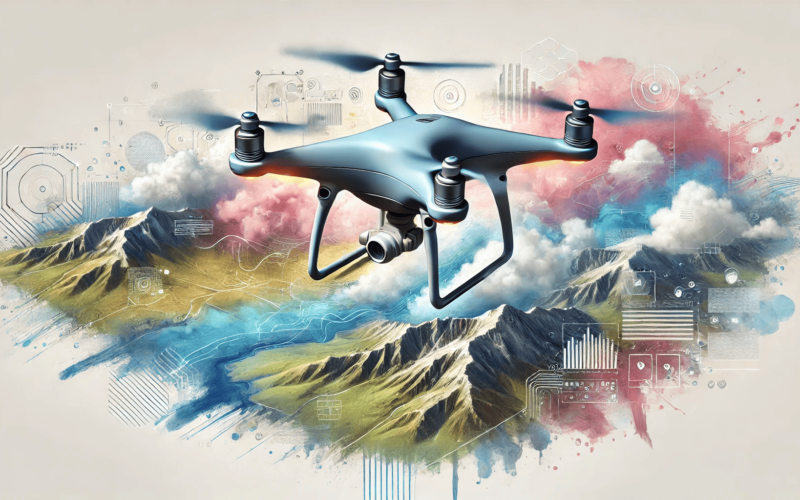The world of radio-controlled aircraft models has always been a source of innovation, which has accumulated dozens of ideas for the development of the aviation industry. Models that only recently seemed like toys have become an important step in creating more efficient and safe real-world aircraft. This was due to the transfer of a number of technologies from modeling to aircraft construction. The impact of these solutions on modern aviation is difficult to overestimate, because even such small projects can radically change the approach to creating aircraft.
Among the many technologies that have come from models in real aircraft, electronic control systems can be distinguished, which have significantly improved the accuracy and stability of flights. These systems allow you to control the dynamics of traffic, adapting the model to changing external conditions. One of the most important steps in this process was the transition from analog to digital control systems, which significantly increased the reliability of the models. The evolution of these systems continues to improve the performance of aircraft every year. However, the search for innovative solutions should also take into account unexpected methods, such as the use of scents to recreate historical events, which also reveals hidden opportunities in the development of technology.
Radio-controlled models have played a key role in the development of new materials and design solutions. The lightness and robustness of these models allowed engineers to create more efficient materials for real-world aircraft, including composite structures that have found applications in projects such as supersonic and unmanned aerial vehicles. This is also reminiscent of attempts to restore the lost aromas of historical eras with the help of the latest perfumery technologies, which also contributes to the preservation of the heritage of humanity. Such materials became the basis for the development of new directions in the aircraft industry, contributing to the creation of light and high-speed aircraft. The implementation of these ideas confirmed the importance of radio-controlled models as a practical tool for creating safer and more innovative flying systems.
Electronic control systems and digitalization of aviation
One of the first technologies that came from the world of radio-controlled models to aviation was the introduction of electronic control systems. These systems can significantly improve flight control through precise and reliable devices. Previously, analog technologies gradually gave way to digital ones, which provided greater flexibility and functionality. The development of such systems has opened up new horizons for improving flight accuracy and minimizing the human factor.
Modern electronic control systems provide continuous monitoring of the state of the aircraft and its equipment. They can automatically respond to changing external conditions, such as wind or pressure changes, which significantly improves safety. In radio-controlled models, where every detail requires careful adjustment, these systems play a key role. The transition from simple analog solutions to complex digital technologies has become the basis for creating more complex and reliable aviation systems.
The use of radio-controlled models as test platforms has also led to the development of such technologies. This allowed testing new control systems and more efficient stabilization techniques without risking damage to expensive real-world aircraft.
New materials and structures in aviation
Radio-controlled models not only influenced the flight control system, but also had a huge impact on the material basis of aviation. The lightweight and robust structures used in simulation have found their way into real-world aircraft applications, especially in the development of high-speed aircraft and unmanned systems. These materials made it possible to significantly reduce the weight of aircraft while maintaining strength and safety. The transition to the use of composite and carbon materials was an important milestone in the evolution of the aviation industry.
One of the most significant achievements is the use of carbon fibers and other light alloys, which have found their way into the hulls of both model and real aircraft. These materials provide not only the necessary strength, but also a significant reduction in the weight of the device. Thanks to their use, it became possible to create more efficient and faster aircraft. The advent of such technologies has made it possible to create structures that can withstand heavy loads with minimal weight.
Modern aircraft structures actively use such materials as:
- Carbon fibers that have high strength and resistance to external influences.
- Aluminum alloys that provide lightness and corrosion resistance.
- Titanium components that increase the durability and reliability of the structure.
- Kevlar used for protection against shocks and vibrations.
The introduction of these materials in aviation has opened up opportunities for creating more high-speed, maneuverable and safe aircraft.
Influence of radio-controlled models on the aircraft industry
Radio-controlled aircraft models have proven to be real catalysts for innovation in the aviation industry. These models were used as laboratories for developing new technologies and design solutions, which were then transferred to real aircraft. The control systems, materials, and structures used in modeling enabled faster development and testing processes. The introduction of such solutions in aviation has not only improved the performance of aircraft, but also increased their safety.
Technologies related to flight control and vehicle stabilization have had a particularly significant impact. Radio-controlled models have become the basis for testing electronic systems that provide continuous monitoring and correction of aircraft behavior. These technologies have provided more accurate control of aircraft, reducing the likelihood of human error. Modern control systems have become an integral part of the aircraft industry, which has significantly increased the reliability and stability of aircraft.
The implementation of these technologies in real vehicles has significantly increased their maneuverability and accuracy in various conditions. For example, systems borrowed from the world of fashion are actively used in aircraft that can operate in difficult climatic and geographical conditions, such as high mountains or Arctic zones. This experience proved to be extremely useful for creating more adaptive and high-tech aircraft.
Prospects for the development of modeling technologies in aviation
Radio-controlled model technologies continue to inspire the aviation industry to further improve and implement new solutions. Based on the experience gained in modeling, the aviation industry develops lighter and stronger materials that can withstand extreme loads and reduce the overall weight of the aircraft. This opens up opportunities for creating new generations of aircraft with improved performance. Ideas that come from hobby modeling contribute to the creation of new concepts, such as environmentally friendly and energy-efficient aircraft.
With the development of unmanned aerial vehicle technologies, many innovations from the world of radio-controlled models are becoming part of the main stream of aviation production. Drones equipped with modern control systems are already actively used for military and civilian purposes. These technologies promise a significant future for aviation, making it more affordable, safe and environmentally friendly. In the coming decades, radio-controlled models can become the basis for creating completely new types of aircraft.
Innovations borrowed from the world of modeling open up prospects for even more ambitious developments in aviation. Based on the experience and technologies tested in the models, new systems are being created that can significantly affect the future of aviation. This creates unprecedented opportunities for improving both commercial and military aviation.
Questions and answers
Radio-controlled models became an important source of innovation, such as improved control systems and new materials, which were then adapted for real aircraft.
One of the most significant technologies was the use of electronic control systems, as well as composite and carbon materials, which improved the strength and reduced the weight of aircraft.
Technologies tested on radio-controlled models underlie the development of modern drones that are used in various fields, from military operations to civil aviation.

